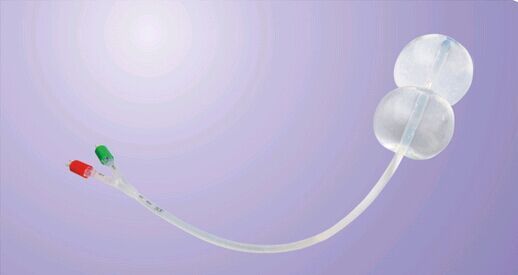Induce labor: effective than balloon catheter dilatation good?
Long ago, people have been induced by a balloon into labor. While the catheter is typically used to urinate, but the catheter has been the most commonly used means people used to induce childbirth. The cook cervical dilatation balloon is used to dilate the cervix designed to induce labor, used more often in recent years.
Recently, Dr. Robinson United States Icahn School of Medicine at Mount Sinai in 2015 the American Society of Obstetrics and Gynecology (ACOG) annual meeting published a study, study tips, from the time point of view, the maternal applications Foley catheter ball in childbirth cervical dilatation balloon dilatation balloon is superior cook. In addition, the application of Foley catheter balloon maternal hospital stay is shorter, the occurrence of chorioamnionitis, turn the smaller the chance of cesarean section.
Figure 2. cervical dilatation balloon
"When hospitals began to use balloon dilatation cook, I do not understand why you want to do, I think the old-school way to be better. Also, Foley catheter cheaper." In order to understand better the effects of what means to induce labor Dr. Robinson, who recalled that assessed the Queens Medical Center in New York in 2013 172 cases of maternal medical records.
Study included 165 cases of maternal, where 27 cases of the use of Foley catheter balloon to induce labor, 138 cases of cervical dilatation balloon using Cook induce labor. The study maternal meet the following criteria: single pregnancy, cephalic fetus, amniotic complete, full-term as well as more than 37 weeks gestation. Two groups of maternal age, body mass index, gestational age, birth status, ethnicity, and Bishop score was no difference. In addition, some mothers induce labor before performing mechanical application of prostaglandins.
Table 1. Comparison of two devices results
Cook ending Foley catheter balloon dilatation
Delivery time, min 1069 1700
Cesarean section, 18%
37
Hospitalization time> 4d,% 48 81
Chorioamnionitis,% 725
Cost, $ 341
"Research shows that you can rest assured that use inexpensive Foley catheter. However, the results may be due to different technologies vary." Dr. Gross said the United States Albert Einstein College of Medicine.
